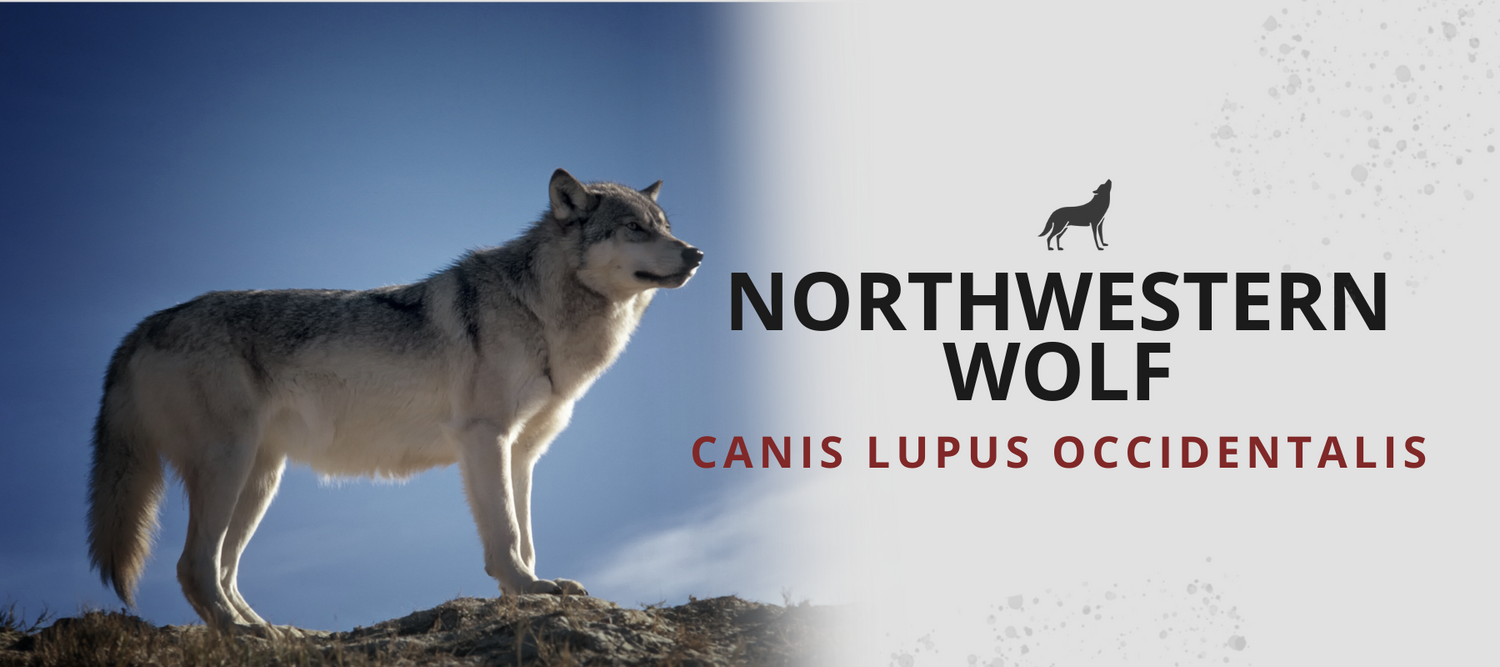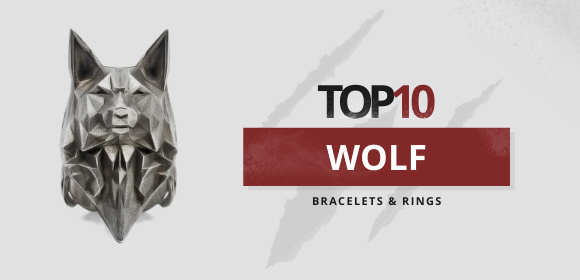
CANIS LUPUS OCCIDENTALIS
The Northwestern wolf (Canis lupus occidentalis) is a subspecies of the gray wolf canid, whose range covers all of western Canada and Alaska. It is also called the Canadian wolf or Alaskan wolf.
- Common name: Northwestern wolf
- Scientific name: Canis lupus occidentalis
- Other names: Canadian wolf, Alaskan wolf, Alberta wolf
- Specie: Gray wolf
- Type: Mammals
- Diet: Carnivore
- Average size: 2.6 feet
- Average Weight: 132 lbs (60kg)
NORTHWESTERN WOLF DESCRIPTION
The Northwestern wolf species is a relatively well-typed animal, considered as a subspecies of the gray wolf, like the 23 other North American subspecies described in the mid-twentieth century. Recent genetic studies have now equated it with rocky mountain populations from Alaska to British Columbia. It now belongs to the northern group, the form Canis lupus occidentalis.
The characteristic of this subspecies is the great variability in the colors of each individual: black, white, gray, or yellowish, even within the same litter. It is one of the largest wolves since it can weigh up to 132 lbs (60 kg), the males being clearly heavier than the females (20% on average). A couple of alpha pair lead a pack of 6 to 8 younger animals that are generally its descendants. This social animal respects the pattern of a dominance hierarchy that naturally takes place within the wolf pack.
Northwestern wolves in the Mackenzie region (Canis lupus machenzii) are black, white or gray. Tundra wolves of the taiga are white. On the other hand, Northwestern wolves living in the coniferous forests of northern Canada and Eurasia are entirely black. The more common wolves are entirely gray.
The Northwestern wolf measures about 2,6 feet (80 cm) at the withers. Foot soles are wide, making it easier for the wolf to move around on snow. Their ears are short to minimize heat loss.

NORTHWESTERN WOLF HABITAT
The Northwestern wolf lives in Canada in the forests of the Mackenzie Mountains in the northwestern part of the country or a small part of Alaska. They are mainly found in rocky mountains, in the taiga, on the tundra or in coniferous forests.

NORTHWESTERN WOLF DIET
Like its cousins, the Northwestern wolf species is a carnivore. They usually hunt in wolf packs, especially when hunting large ungulates. Its main prey are moose, bison, elk, caribou, herds sheep, white-tailed deer and rocky mountain goats. But it also makes do with smaller prey such as beaver, lemmings, ground squirrels and snowshoe hares.
A lone wolf in search of a mate has great difficulty eating. So, it feeds on small prey (rodents, birds, eggs, fruit) or carcass.

NORTHWESTERN WOLF BREEDING
Wolves build dens by digging into the ground. These holes can extend into short galleries. The den is use during breeding season for giving birth in the spring (usually in May) after 2 months of gestation.
Only the alpha male's mate, the dominant female, has the right to breed in the pack. She-wolf gives birth to 4 to 6 blind and unfit wolf pups that will grow up in the pack and may leave it at their sexual maturity to form a new couple to start a new pack.

NORTHWESTERN WOLF BEHAVIOR
Northwestern wolves dig their dens in the earth, under brush or rocks. It is always located near a water source. This den is only use by the female and cubs to protect them and provide shelter.
The territory of a pack extends over 80 and 240 km². There are huge differences between the different regions of the world in this size. In some countries such as France, for example, it is now proven that a pack travels over a territory of 200 km². This is probably the highest density in the world.
To delimit its range, the Northwestern wild wolf leaves fresh scent marks when urinating and also signals its presence to other wolves by howling. The wolf howl asserts its territory and to bring together the members of its pack

NORTHWESTERN WOLF CHARACTERISTIC
Melanism in wolf populations is quite rare, but this phenomenon can occur in all areas of the Northern Hemisphere, including Western Europe, as it has recently occurred to wolves in captivity in the Abruzzo National Park in Italy.
The wolves found in the coniferous forests of northern Canada are generally black in part or all of them.

NORTHWESTERN WOLF SPECIES PRESERVATION
Once widespread on all continents of the northern hemisphere, wolves reached their minimum numbers in the 1950s. Fear and contempt for the wolf are still exacerbated today in areas where the wolf has returned after a long absence. When a country's economy is based solely on the raising of grazing animals, the wolf canis lupus is seen as a nuisance to be eradicated.
The ecological role of the wolf is mainly to control overpopulation, but it is also useful for the disposal of corpses and natural rubbish.
For example, in Europe, the wolf is protected by the federal protection of Bern Convention (1979), and by the Habitat Directive, defenders of wildlife, to participate to wolf conservation and reintroduction by protecting them of wolf hunting.
NORTHWESTERN WOLF VARIETIES OF THE SUBSPECIES
The physical appearance of gray wolves varies greatly depending on their region of origin. Many subspecies have been described on the basis of a few individuals, without taking into account the natural phenotypic variability of the species.
For example, Edward Alphonso Goldman, a biologist, described 24 different American subspecies in 1944. Current research is based on multifactorial criteria such as morphology, paleontology, behavior and genetic analysis.
This reorientation of the description of subspecies has led to a considerable reduction in the number of subspecies, considering that in the majority of cases these are local adaptations of the species Canis lupus.
In 1983, professor Nowak proposed to reduce the American wolves to 5 subspecies: Canis lupus occidentalis, Canis lupus arctos, Canis lupus baileyi, Canis lupus nubilus and Canis lupus lycaon.
Subsequently, the subspecies Canis lupus lycaon was recognized as a distinct species and removed from the list of 5 already recognized.
Canis lupus occidentalis now includes the following subspecies list:
- Prairie wolf (Canis lupus griseoalbus)
- Mackenzie wolf (Canis lupus mackenzii)
- Alaskan wolf (Canis lupus pambasileus)
- Alaskan Tundra Wolf (Canis lupus tundrarum)
- Kenai Peninsula Wolf (Canis lupus alces) †
- Colombian wolf (Canis lupus columbianus) †
The species is not protected by recovery plan for wolf protection. It is even hunted for its fur, except on 2% of the Northwestern territory. The Northwestern wolf population is estimated at about 50,000 individuals and don’t appear on the red list of endangered species.
If you want to go deeper in wolf research, we recommend you our blog post on Northern rocky mountain wolf.




